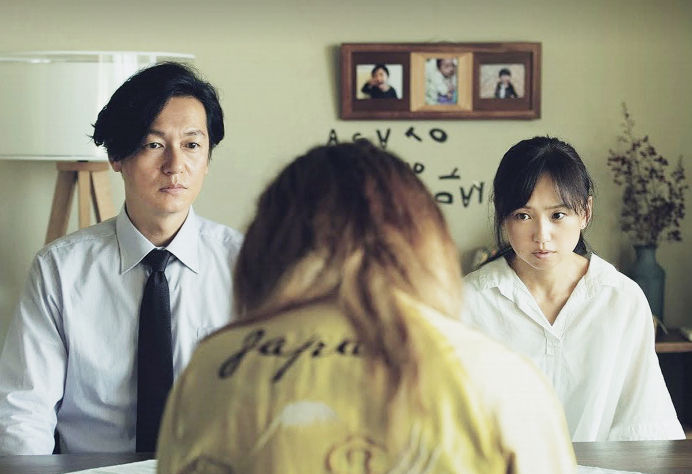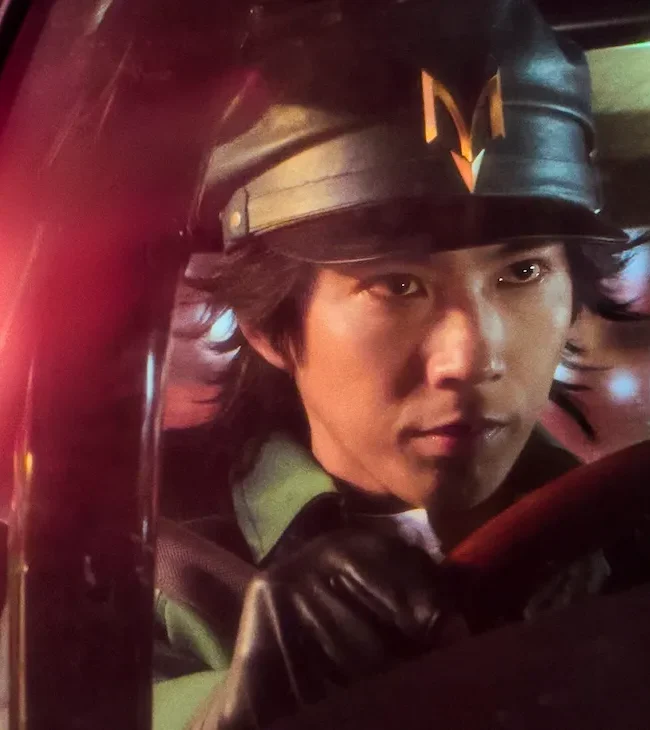
(Japan‘s Official Oscar Entry, True Mothers from Director Naomi Kawase, Arrives on DVD/Digital on 6/8, Exclusively from Film Movement. Like what you see here on Hammer to Nail? Why not give just $1.00 per month via Patreon to help keep us going?)
There are several scenes in Naomi Kawase’s True Mothers that involve movement caused by wind. The wind moves through cherry blossom trees, blows curtains, makes doors open and close seemingly out their own volition. Kawase is not the first to harness the wind for cinematic purposes. Tarkovsky employed the technique numerous times. One could trace the partnership between wind and cinema back to D.W. Griffith’s declaration that cinematic beauty amounted to “moving wind in the trees.” Kawase’s wind implies a mother, better said the specter of a mother, a disembodied figure from the past hovering over the lives of others.
Satoko (Hiromi Nagasaku) and Kiyokazu (Arata Iura) have a young son, Asato (Reo Sato). Satoko has been receiving ominous calls from someone who immediately hangs up. Through flashbacks we discover the difficulties Satoko and Kiyokazu encountered when trying to start a family. Kiyokazu is diagnosed as having aspermia – he lacks sperm in his semen. The couple decide to adopt. An adoption specialist informs the couple that once the adoption is finalized, the biological parents cannot reverse Satoko and Kioyokazu’s parental rights. Asato’s biological mother is a fourteen-year-old girl named Hikari (Aju Makita) whom the couple meets right before taking Asato home. We are then given flashbacks of Hikari’s arduous life. When we are thrown into the present, we discover the mysterious caller is indeed Hikari. She wants her child back and goes so far as to resort to blackmail. The specter lingering in the background, the lingering trace from the past is now back, a flesh and blood person demanding the return of her biological child.
True Mothers works on several levels. The dialogue between characters conveys intimacy and care. Satoko’s interactions with Asato are infused with such a profound maternal love that it makes you forget that mother and child are acting. True Mothers brims over with delicacy. The delicacy is more than appropriate given the subject matter – adoption, teen pregnancy, and a couple’s desire to have a child. It is hard to imagine a thornier subject than when and how to reveal to a child that they are adopted. In that sense, True Mother’s tone and pacing perfectly match the plot’s subject matter. Admittedly, some moments in the film feel a bit too sentimental, they come right up to the boundary of oversentimentality. Kawase, however, always manages to pull the film away from a syrupy precipice.
There are some elements in the story that do not quite cohere with the central plot. These elements can be overlooked given the wonderful acting and Kawase’s overall directorial command. Lives intersect in True Mothers. Those intersections sometimes cause grief to the characters in the film. Given what we know about the characters via flashbacks, we gain empathy, and we understand that whatever grief is caused is not purely intentional. In our lives, we tend to be very bad at separating unintentional from intentional grief. It requires stepping outside of our subjectivity and occupying different shoes. Many times, art is the only vehicle that allows us to make that jump into other shoes with ease.
– Ray Lobo (@RayLobo13)












Pingback: Vitro Nasu » Blog Archive » Naomi Kawase – “True Mothers’ ( japanese title Asa ga kuru)